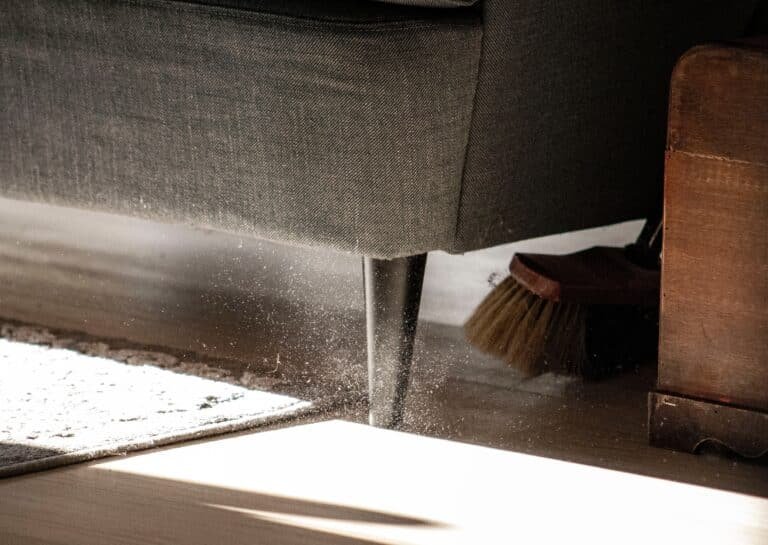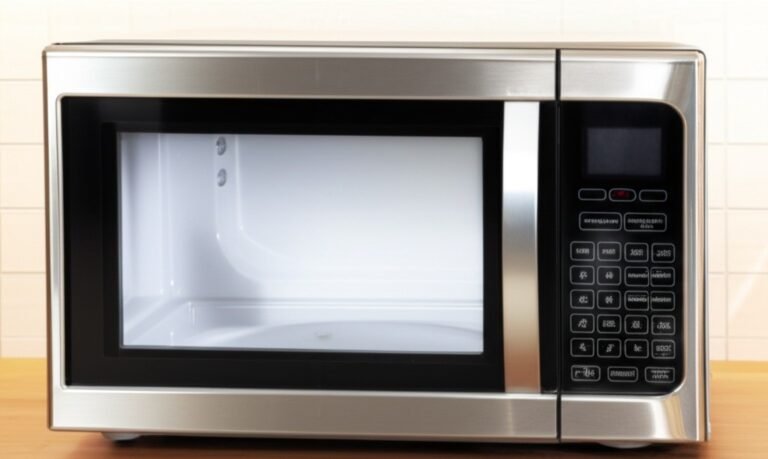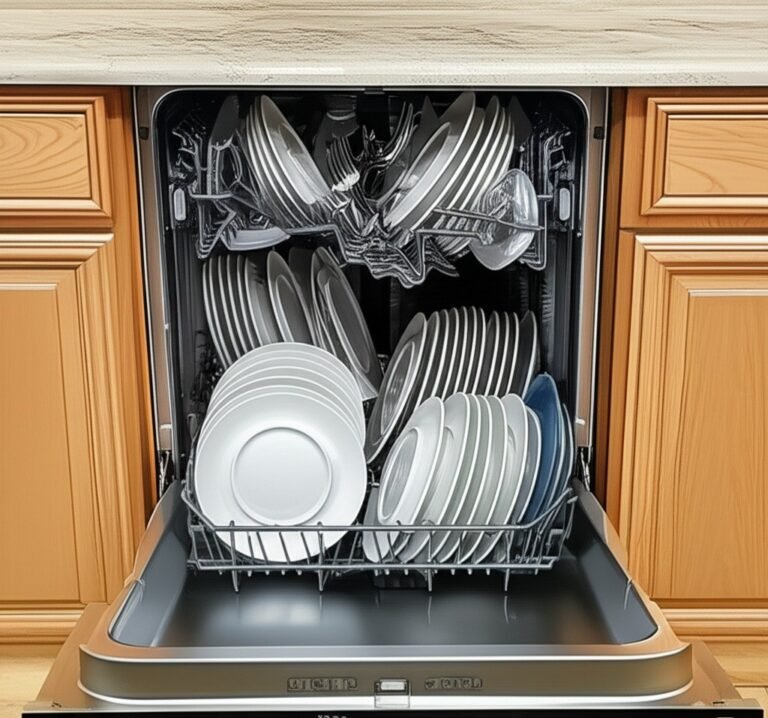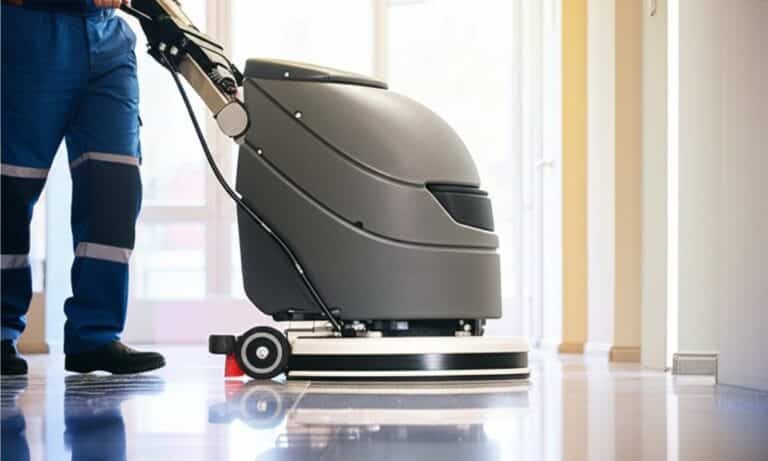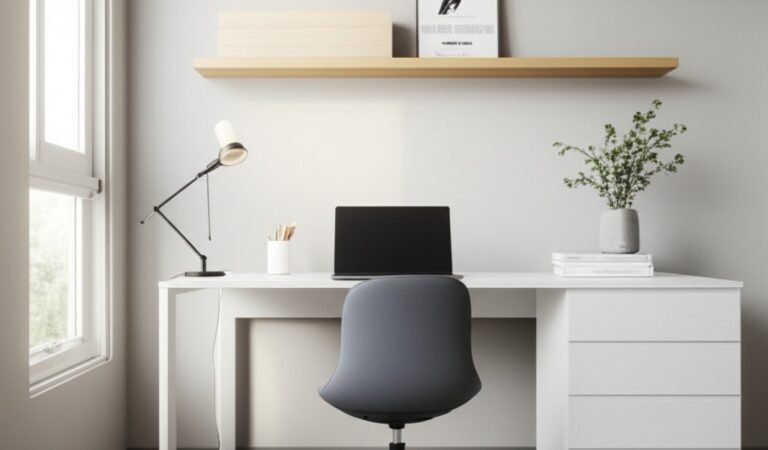Tackle Allergens in your home doesn’t have to feel like a never-ending battle against invisible enemies. With a few simple changes, you can significantly reduce your exposure to common allergens and enjoy a cleaner, healthier living space. Let’s dive into six easy steps you can take to keep those sneeze-inducing culprits at bay, making your home a sanctuary for comfort, not sniffles.
1. Regular Dusting and Vacuuming
First off, understand that dust mites are tiny creatures that aren’t just chilling in the corners; they’re pretty much partying it up all over your home. They particularly adore fabrics and upholstered furniture, where they can burrow deep and multiply. This is why simply moving a duster around on the surface isn’t enough. To really kick these gatecrashers out, you need to be a bit more strategic.
When you’re dusting, start from the top of a room and work your way down. This method ensures that any dust you’ve dislodged from higher places doesn’t settle on freshly cleaned lower surfaces. Ceiling fans, bookshelves, and picture frames are often overlooked havens for dust. Using a microfiber cloth can be a game changer here. These cloths are designed to trap dust rather than just moving it around. They can be used dry or slightly dampened with water or a suitable cleaning solution, depending on the surface you’re tackling.
Now, about vacuuming – this is where you can really make a significant impact. Vacuuming isn’t just for carpets and rugs; it’s also crucial for floors, sofas, and even curtains. If your vacuum comes with attachments, use them. They’re not just fancy extras; they’re designed to help you reach into nooks and crannies where dust mites and their allergen-packed droppings like to hide.
For households particularly sensitive to allergens, vacuuming once a week might not cut it. High-traffic areas might need a run-over more frequently, and don’t forget to vacuum under furniture and in other out-of-sight areas where dust bunnies like to multiply.
Speaking of vacuums, HEPA filters are indeed your best friend in the fight against indoor allergens. These filters can capture particles as small as 0.3 microns – that’s way smaller than the average dust mite. However, to keep them performing at their best, you need to maintain them. Follow the manufacturer’s guidelines for cleaning or replacing the HEPA filter. A clogged filter won’t just fail to trap allergens; it can also reduce the efficiency of your vacuum cleaner, making your cleaning efforts less effective.
2. Keep the Windows Closed
High pollen seasons can vary depending on where you live, but they typically occur during spring, summer, and fall. During these times, trees, grasses, and weeds release tiny grains into the air to fertilize other plants, and unfortunately, these grains can wreak havoc on allergy sufferers.
Opening windows, even for a short while, can invite these pollen particles inside, where they settle on surfaces and linger in the air, waiting to trigger your allergies. It’s not just pollen you have to worry about either. Urban areas can have additional pollutants and particulates from traffic and industry, while rural areas might introduce mold spores and other agricultural allergens into your home.
So, what’s the alternative? Air conditioning can be a lifesaver. It allows you to keep your indoor environment comfortable without opening your home to outdoor allergens. However, this is where it gets a bit more technical. Air conditioning systems circulate air through filters that can trap pollen and other particulates, but these filters need attention to keep working effectively. Regular maintenance is key.
Replacing or cleaning air conditioner filters as recommended by the manufacturer is critical. A dirty or clogged filter not only reduces the efficiency of your air conditioning system but can also become a source of air pollution inside your home. Some filters are reusable and can be cleaned with water, while others need to be replaced altogether. Investing in high-quality filters can also make a significant difference in improving indoor air quality.
Consider the use of air purifiers with HEPA filters in rooms where you spend a lot of time, such as bedrooms or home offices. These devices can further reduce the concentration of pollen and other allergens in indoor air, complementing the work of your air conditioning system.
For those exceptionally sensitive to indoor air quality, monitoring outdoor air quality reports can be beneficial. On days when the pollen count or pollution levels are particularly high, you can take extra precautions, such as running air purifiers more frequently and avoiding opening doors unnecessarily.

3. Use Allergen-Proof Bedding
Investing in allergen-proof covers is a proactive step toward creating a healthier sleeping environment. These covers are designed with tightly woven fabric that dust mites and their allergens cannot penetrate. Encasing your mattress, pillows, and duvets in these barriers effectively locks out mites, denying them the cozy habitat your bedding offers. It’s a simple solution that can significantly reduce your exposure to these allergens.
However, it’s not just about blocking allergens out; maintaining a clean sleeping area is equally critical. Regular washing of your bedding in hot water (at least 130°F or 54°C) is essential for killing dust mites and removing the allergens they leave behind. While allergen-proof covers protect your mattress and pillows, your sheets, pillowcases, and duvet covers are still exposed and can accumulate allergens. Weekly washing, therefore, becomes a crucial part of your allergen reduction strategy.
It’s also beneficial to extend this cleaning regime beyond just your bedding. Consider curtains, area rugs, and any fabric-based decorations in your bedroom as potential allergen accumulators. Washing or cleaning these items regularly can further reduce the overall allergen load in your sleeping environment.
For those with severe allergies, additional steps can be taken to minimize exposure. Replacing upholstered furniture with non-upholstered alternatives, opting for hardwood floors over carpets, and using air purifiers with HEPA filters can all contribute to a cleaner, less allergen-rich bedroom.
4. Control Indoor Humidity
Controlling indoor humidity, therefore, isn’t just a recommendation; it’s a necessity for a healthier living environment. Keeping humidity levels between 30% and 50% creates conditions that are less hospitable to dust mites and mold. Achieving this might sound complicated, but with the right tools and habits, it’s entirely manageable.
Using a dehumidifier, especially in naturally damp areas of your home like basements, crawl spaces, and even some ground-floor rooms, can help maintain an optimal humidity level. These devices work by drawing excess moisture from the air, collecting it in a tank that you periodically empty. For larger homes or areas where humidity is a persistent issue, consider a whole-home dehumidifier system, which integrates with your HVAC system to control humidity throughout your entire home.
Ventilation plays a crucial role in humidity control as well. Moisture-heavy areas such as bathrooms and kitchens generate a lot of steam, which can increase indoor humidity levels. Installing and using exhaust fans in these rooms can help by venting moist air directly outside, preventing it from circulating throughout your home. Additionally, ensuring that your clothes dryer is vented to the outside can prevent excess moisture from adding to your indoor humidity levels.
It’s also helpful to be mindful of other sources of indoor moisture. Overwatering houseplants, for instance, can contribute to indoor humidity. Similarly, storing firewood indoors can release moisture into the air as the wood dries out. Simple changes in these habits can have a noticeable impact on your home’s overall humidity levels.
Regular maintenance of your HVAC system is another key factor in controlling indoor humidity. Ensuring that your air conditioning unit is functioning efficiently can help, as these systems remove moisture from the air as part of the cooling process. Regular servicing, including cleaning or replacing the air filters, can improve performance and aid in maintaining appropriate humidity levels.

5. Declutter Your Space
The process of decluttering, then, becomes an essential strategy for creating a healthier living environment. It involves more than just occasional cleaning; it’s about adopting a mindful approach to what you allow in your living space. The less clutter you have, the fewer places allergens have to hide. Furthermore, a decluttered space is far easier to clean and maintain. Vacuuming, dusting, and wiping down surfaces become less of a chore and more of an efficient, straightforward process when you don’t have to maneuver around unnecessary items.
Adopting a minimalist approach to home decor can significantly amplify these benefits. Minimalism doesn’t mean your home has to look bare or uninviting; rather, it’s about choosing to surround yourself with items that serve a purpose or bring you joy, reducing excess. This philosophy extends beyond aesthetics, offering practical benefits for allergen reduction. With fewer decorative items to collect dust, cleaning becomes more effective and less time-consuming. Additionally, minimalist decor encourages more open space, which improves air flow and reduces the accumulation of dust and allergens.
To start decluttering, focus on one area at a time. Begin with surfaces that are notorious for collecting clutter, such as kitchen counters, coffee tables, and desks. Ask yourself whether each item is necessary, used regularly, or if it could be stored away or donated. Implementing storage solutions that keep items off the floor and surfaces can also help minimize dust collection.
Regular decluttering sessions can prevent the accumulation of clutter and make it easier to maintain a clean, allergen-free home. Remember, decluttering is not a one-time task but a continuous effort to create a healthier living environment.
6. Regular Cleaning of Pets
Pets, with their boundless affection and loyalty, are indeed cherished family members, yet they unwittingly act as carriers for various allergens. These allergens include not only the pet dander (tiny flakes of skin) but also pollen, mold, and dust that their fur can collect from the outdoors.
Implementing a routine of regular baths and grooming sessions for your pets is vital in minimizing these allergens. Bathing your pets helps to wash away the dander and any accumulated allergens from their fur. However, it’s essential to strike a balance, as over-bathing can dry out their skin, leading to more dander. Consulting with a veterinarian can help determine the best bathing schedule and products for your pet’s skin and coat type.
Grooming extends beyond bathing, encompassing brushing and even professional grooming services. Regular brushing can significantly reduce the amount of hair and dander your pet sheds around the house. It also offers a prime opportunity to check for fleas and ticks, which can contribute to the allergen load in your home. For pets with long hair or specific grooming needs, professional grooming services can ensure their coat is properly cared for, further reducing the potential for shedding and dander spread.
The strategy of restricting pets from bedrooms and upholstered furniture can further aid in keeping allergen exposure to a minimum. Bedrooms, in particular, are critical, as we spend a significant portion of our time there, often in close contact with bedding and pillows that can trap pet dander. By creating pet-free zones, you can ensure at least part of your home remains a lower-allergen area, providing relief to family members who may be particularly sensitive.
Additionally, investing in air purifiers with HEPA filters can help capture airborne dander and other allergens, further improving the indoor air quality for everyone in the home. Regularly cleaning pet bedding and toys is also crucial, as these items can harbor dander and dust mites.
It’s important to remember that managing pet allergens is about reducing, not eliminating exposure, as it’s challenging to create a completely allergen-free environment with pets. However, with consistent care, cleaning, and some strategic planning, you can significantly minimize the impact and enjoy the companionship of your furry friends without compromising the health and comfort of your household.
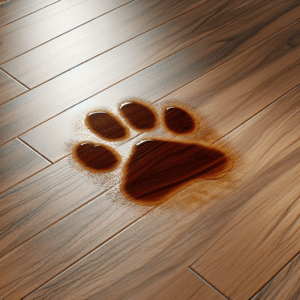
Tackle Allergens With Easy!
Taking steps to reduce allergens in your home is a journey towards healthier living, one that doesn’t necessitate drastic changes but rather the incorporation of mindful, everyday habits. By making your living environment less inviting to allergens through regular cleaning, decluttering, and other simple yet effective measures, you’re setting the stage for a healthier, more comfortable home. These actions not only benefit those with allergies or sensitivities but enhance the overall quality of life for all who share your space. The beauty of this approach lies in its simplicity and the immediate, tangible benefits it offers, such as improved air quality and a cleaner, more organized living environment.
Maintaining a consistent routine is crucial in the fight against household allergens. Consistency ensures that allergen levels remain low, and your efforts have a lasting impact. Understandably, life can get busy, and it might be challenging to keep up with the cleaning regimen needed to significantly reduce allergens. This is where professional cleaning services, like those offered by Toronto Shine Cleaning, come into play. Our team of experts is equipped with the tools and knowledge to tackle allergens at their source, providing a deep clean that goes beyond the surface level. Opting for professional cleaning services can give your home the thorough, allergen-reducing clean it needs, complementing your daily efforts and enhancing the overall healthfulness of your home.
Toronto Shine Cleaning specializes in creating allergen-free environments for homes across Toronto and the surrounding areas. Our deep-cleaning services are designed to address the nooks and crannies that regular cleaning might miss, targeting dust mites, pet dander, and other allergens that can accumulate over time. By choosing Toronto Shine Cleaning, you’re not just getting a clean house; you’re investing in the health and well-being of your family.













